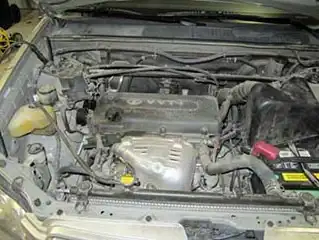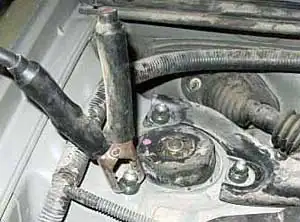
Copyright 2024 Electrical101.com All Rights Reserved.



Automotive Batteries
Automobile batteries contain lead plates in a bath of acid and can deliver several hundred amps for starting an engine. An automobile has an alternator that charges the battery when the engine is running. Automobile batteries are not meant to deep discharge, this could damage the battery.
Charging a car battery
Leaving a light on in your car for a long period of time can drain an automobile battery enough so that the engine won’t start. If an automotive battery is fully discharged, it should be recharged as soon as possible.
Automotive Battery chargers are available at auto parts stores or online. You can usually set the charge rate (for example, starting at 10 amps, 6 amps, or 2 amps). As the battery charges, the charger output amps will go down. When the charge rate goes to 0 amps, the battery is full.
Car battery maintenance
If there are removable caps on the top of the battery, check each cell for fluid level every six months to a year. The fluid should never be below the top of the plates or above the bottom of the filler tubes. Ideally the level should be at the bottom of each tube below the filler caps. Fluid level can be checked and water added if needed.
If the battery terminals are corroded, use baking soda and water or a commercial car battery cleaner. After cleaning, use a commercial battery protector and sealant to help prevent corrosion.
Can I use tap water to fill a car battery?
Only use distilled water to fill a car battery because tap water contains minerals and chemicals that could contaminate the battery.
How long does a car battery last?
A car battery should last at least as long as the warranty period. If a battery is exposed to extreme cold or hot conditions, it may be a little less than the warranty period. Each time a car battery is completely discharged, it will slightly damage the battery and reduce its life.
A car battery usually warns you if it is getting ready to fail. The starter may sound labored when starting or require a jump start after long periods of not being driven. If you get any of these warning signs, take it to a mechanic or auto parts store and have the battery tested. When a battery is ready to fail, have it replaced as soon as possible to avoid getting stranded.
It takes hundreds of amps to start a car, so all cable connections to the batteries must to be solid, and free from corrosion and paint. Connecting or touching the jumpers to the wrong battery terminals can cause a short circuit. A short circuit can create an arc flash (cause burns) and possibly damage the batteries.
The final connection to the car with the dead battery usually produces a small arc flash because current immediately flows from the good battery to the bad one. Making the final connection to the frame far away from the dead battery reduces the possibility of igniting hydrogen gas that may be emitted from the dead battery.
How to jump start a car battery
1. Place the cars next to each other so the battery cables will reach each battery. The cars must not touch each other. Turn off the engine.
2. Using the battery jumper cables, connect the red positive (+) live battery terminal to the red positive (+) dead battery terminal.
3. Connect the black negative (-
4. Start the car with the good battery. If the battery is fairly new and you just left lights on, wait a few moments and start the car with the dead battery. Let both cars run for a few more moments and disconnect the negative terminal from each car. Then disconnect the positive leads of the jumper cable to the batteries.
5. If the car dies when disconnecting the negative battery cable, try it again and wait about 5 minutes before disconnecting the negative jumper cable. If the engine still dies, it may be at the far end of the battery’s life cycle or the car charging system has failed.
The car with the dead battery will need to be driven for up to an hour to recharge the battery so the car can start up again after being turned off. If you have a car battery charger, you can drive the car home and connect the battery charger for an overnight charge.

Jumper cable negative connection far away from battery

How to test a car battery
The best way to test a car battery is with an automobile battery tester (mechanic or auto parts store). If you have a volt meter, measure the voltage on the battery after a charge. It should be a little more than 12 volts after charging and close to 12 volts long after it has been charged. If you charge it with a good battery charger in the evening and measure 10 or less volts in the morning, the battery is probably bad.
How to test car charging system
A mechanic can test your charging system, or if you have a volt meter, you can test it yourself. Select a DC voltage range of 20 volts or more. With the car not running connect or touch the red positive (+) test lead to the positive terminal of the battery. Connect or touch the black negative (-
Turn on the engine and again connect the meter leads to the battery. If the meter shows about 13.5 to 14.5 volts (sometimes as high as 15.5 volts), the car charging system is good. If the dead battery has internal shorts, you may get false (lower) voltage readings because the battery is putting too much of a load on the alternator.